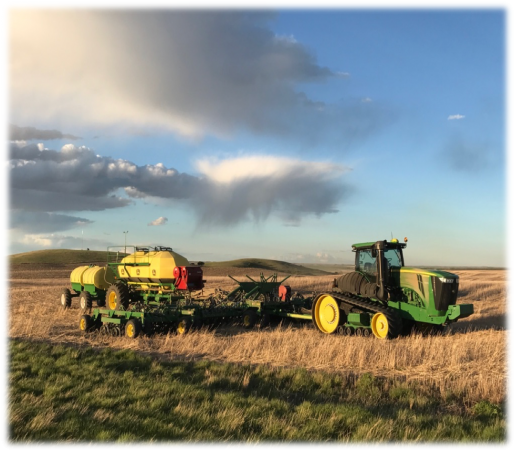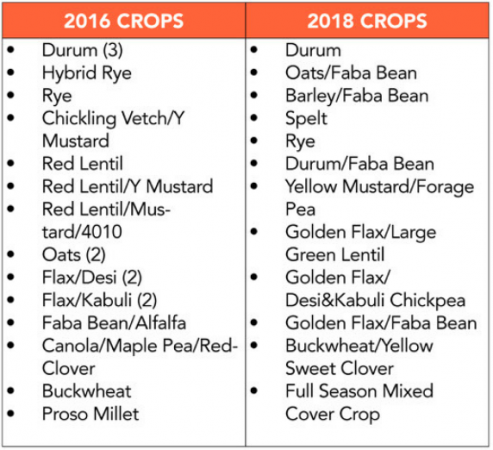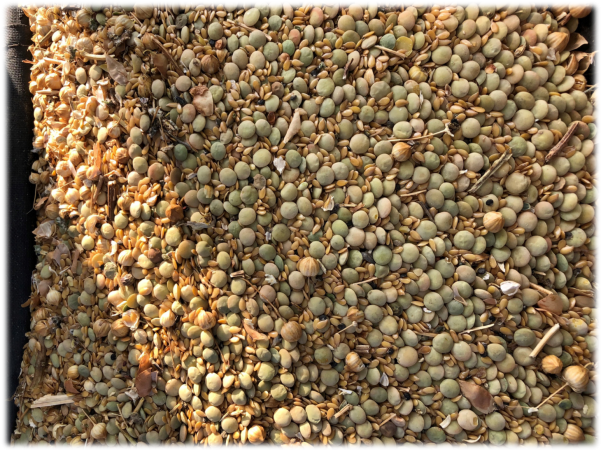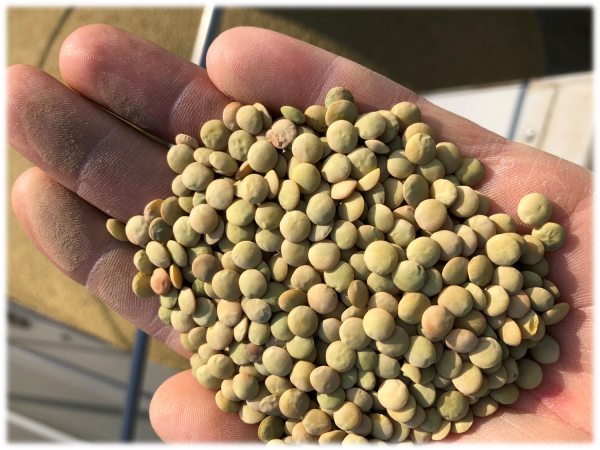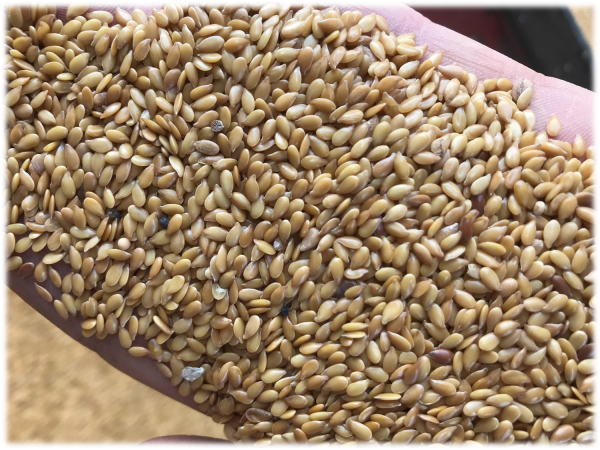
Features
Soil Summit 2019
Soil
Loyal to the soil: intercropping insights
Keeping soil diverse, covered and alive.
June 14, 2019 By Presented by Derek Axten, Axten Farms, Minton, Sask., at the Soil Management and Sustainability Summit, Feb. 26, 2019, Saskatoon.
I’m just a farmer. I’m not a soil microbiologist or a soil scientist. I’m going to walk through what we do on our farm and the results that we’ve seen. Intercropping is the theme of my presentation, but it’s more about how intercropping fits in almost all the crops that we grow.
Our goals include the five pillars of soil health. The main one we really focus on is diversity, because that’s been the big thing for our farm. We try to keep our soil covered. We try to do as little disturbance as possible. Keeping a live root in the soil is getting to be a bigger part of our operation all the time. We don’t have cows but we have an agreement with a local cattleman who brings us groups of about 600 that we graze cover crops in the fall.
A couple of things that really changed our direction I guess and how we wound up on this path, was winding up on Dr. Dwayne Beck’s research farm at Pierre, South Dakota 12 or 14 years ago. He showed me the value of rotation and things that we had never talked about – adding warm-season crops and worm holes and stuff that wasn’t in normal conversation back home.
Going from Beck’s we wound up at Gabe Brown’s farm in North Dakota and it was also a turning point. When we went to Gabe’s and looked at his soils and he shows us this black cottage cheese soil, and it was awesome. But the eye-opening thing for me was when we walked across the grid road and stuck the shovel in the soil; it was exactly what it was like at home – not very good. And the only difference between those two farms was management. So, we just sort of started adding more diversity. That was probably where it all started, and that’s where intercrops is going to fit into this.
We eventually felt our progress had plateaued because we had diverse crop rotations, had a stripper header, and are no-tillers, but we weren’t happy with our infiltration or yields. We saw a presentation by Dr. Elaine Ingham in Montana about the whole biological portion in soils and it just made sense, so my wife Tannis took her online courses. Dr Ingham opened our eyes to the biology side of the whole operation.
The other interesting course we took was from Dr. Wendy Taheri, a microbiologist and mycorrhizal fungi specialist. So Tannis took a three-day course from her, because it was really interesting not only to learn about the importance of mycorrhizal fungi and why we want that in our soils, but how to identify it. Luckily we do have those fungi in our soils, so we don’t need to go buy some of those inoculants that are on the market.
Around the same time we started intercropping and I realized that we don’t want to be growing these non-mycorrhizal crops like canola on their own. So that was sort of where intercropping started – “Let’s bridge that mycorrhizal through the year.”
What are the outcomes of having good biology in the soil? Moisture infiltration is one of them. Last spring we had an inch of rain during seeding, so we went out and did some infiltration tests after the rain. We pound a 12-inch diameter steel ring into the soil and pour water into it. On the lentil and flax intercrop stubble, on inch of water infiltrated into the soil in 29 seconds. We poured a second inch of water on and it took 10 minutes. That’s the equivalent of six inches per hour.
So now when we get these big rainfalls, it seems like the rain in Minton is always angry rain, we can grow a better crop because we can store it instead of having it run away.
How do we maintain the residue? We like to disturb as little as possible. We owned just about every kind of single-disc drill there is and we wound up back with a single-disc John Deere.
Something we learned early on with the disc drill was residue management. In 2007, we had John Deere 9600 combines with 36-foot MacDon headers and brutal choppers. We went to seed into that with our disc drill and we had all sorts of problems. That’s when we got into stripper headers because it leaves the straw standing instead of chopping it into a mat that a disc can’t cut through.
We’ve used stripper headers ever since for other reasons, too. Combine efficiency is huge. We burn quite a bit less fuel, and we can drive fast. One of the things I noticed early on was the uniform snow catch.
This fall we intentionally put all of our winter cereals into strip stubble because we were concerned that we were going to have a problem with overwintering. So we’ve got a really nice blanket of snow, so they should be fine. Our number one problem on our farm right now other than lack of water is lack of residue and lack of surface cover. We just can’t seem to keep cover on so stripper headers help.
We are a controlled traffic farm. We’re going into our fifth year. We have a 30-foot system – nine metre system. We tried a 12-metre or a 40-foot system early on, and I think it’s a better fit if you’re flat. For me a big benefit is the ability to inter-row seed and possibly relay seed cover crops. Once we have this set of trams, we can go in and do all these things.
We’ve growing a lot of different intercrops. We started in 2011. Pea-canola was the easy one; with Clearfield canola the herbicides line up. I really, really wanted faba beans to work, but they do not like the drought.
We have a lot of diversity on the farm. I’d honestly say too many. In 2016 we had 14 different crops and intercrops. It adds a lot of complexity. But it was sort of a means to an end because we wanted to figure out what are the intercrops that are working the best for us? We’ve narrowed it down for 2018 and we’ll be down to hopefully under 10 different crops.
The most consistent one we’ve used hands down has been flax and chickpeas. We quit growing chickpeas in the early 2000s because of disease. When I heard that Lana Shaw at the South East Research Farm at Redvers, Saskatchewan was growing chickpeas with basically no fungicide, I thought I should try it again. We seeded 1,500 acres of flax and chickpeas the next year and had really good success.
We do an alternate-row flax-chickpea, because back in the day when Lana first started the research, she was doing that. I think maybe the alternate-row gives us a little bit disease suppression. Since we’ve started doing this, we’ve only had to use two fungicide applications.
Our yields are slightly less with the flax-chickpea intercrop, but generally when you do the math, we’re still usually money and risk management ahead. And something else we’ve noticed about the flax and chickpeas is we used to always have this chickpea hangover that we used to blame on soil moisture. And, from what I’ve seen now, we’re actually getting better crops after the inter-crop and I don’t what it is, if it’s just less fungicide or if it’s some kind of interaction that we’re seeing between the flax and chickpeas. But we always use to dread the crops behind chickpeas and now they’re actually some of our better ones.
You have to plan ahead for alternate-row seeding. We intentionally ordered our John Deere 1890, with double shoot openers and cart. We can move the hoses from one tower – they’re numbered – to the other tower, and we just flip the double shoot. We put plugs in the empty holes.
What I do like about it is years like 2017 when it was super dry, we were able to actually put the flax in shallow, and the chickpeas we put them as far down as that thing would go to get them in the moisture. That’s one of the thing I did like the alternate-row, where chickpeas sometimes need a little more moisture than flax to get going, so that I thought was a benefit of the alternate-row.
This is our third year with flax and lentils. We’d always been growing our lentils with mustard, and I always felt that the mustard towering over the lentils was interrupting sun and was outcompeting, because we never could get monocrop lentil yields with a mustard-lentil. So we tried flax and lentils and it actually worked out pretty well. The lentils seem to get as tall as the flax and we’re fairly confident we’ve been hitting monocrop lentil yields plus we’re getting flax on top of it.
But the nice thing about flax-lentil beside the decent yields is the harvestability. The lentils basically trellis up the flax. It seems like they even get longer internodal lengths than they normally do. And the other big thing that we’ve noticed is surface residue. It changes the carbon-nitrogen ratio, so instead of your lentil fields being black by November, we actually are maintaining surface residue.
We only grew canola on our farm back in 2011. We just found mustard is a better fit. I like yellow mustard. We grow mustard with forage peas. Forage peas are normally a low lying-down disaster, but when we put them with mustard, they stand up well.
For combine settings, we run a small-wire and two large-wire concaves in these John Deere rotaries, and we find that works pretty well. We just add and subtract cover plates as necessary. The odd time we have to have all cover plates on, but usually two or three are enough so we can get a clean sample. We set it for the lentils or the chickpeas or whatever, and then we just slow the fans down until we get a mess, and then we speed them back up and then we start doing pan drops. And that’s pretty much how we set them.
Cleaning intercrops
We started off with the rotary screen. They work great. We’ve tried quick-cleans. They work good. McDougall Acres at Moose Jaw is buying mixed flax-chickpeas now and will give you the flax back.
We just got a mobile seed plant. It uses air, screen, indents and then a gravity table. The lentils go into the tandem truck, and the flax screenings go to the super-Bs, and the old brown TopKick truck gets the refuse like pods and stems. The refuse goes into a pile to compost.
We’re in our fifth year with the mobile but we are building a regular indoor seed plant, because we finally have enough confidence in the system that we’re going to invest in an actual seed plant.
Companion crops
For companion crops, we take like a short-lived perennial or an annual forage crop like clover and we’ll add that in the row with an intercrop or maybe a monocrop. We put three pounds of red clover down the pipe with our pea-canola. The idea behind this is we’re trying to capture as much carbon by trying to have a live root growing as much as possible. At harvest, instead of seeding cover crop, you already have a crop established that is big and fixing nitrogen. The disclaimer on this is clover has been super hit-and-miss for me. I think it’s soil moisture at seeding time.
We’ve tried alfalfa as a companion crop seeding it faba bean. After harvest, we seeding fall rye right in behind the combine with inter-row seeding. So now we have rye and alfalfa growing. We tried to spray out the alfalfa in the spring with two and a half ounces of 2,4-D and the alfalfa was laughing at it. By the time we got back with six ounces I wasn’t sure if I should be spraying the alfalfa out of the rye or the other way around. This was in 2017, so it was brutal with 35-millimetres-rain. We combined 25 bushels of rye. It absolutely blew my mind. I didn’t think we were going to get our seed back. I know 25 bushels of rye is not super cash-flow awesome, but considering the situation, I just thought it wasn’t a complete loss. But the alfalfa is still there.
So we are continuing to try to provide some diversity with cover crops. One of the big things about this for me was keeping the temperature of the soil down. At 100 degrees F, we’re only using 15 per cent of our moisture for growth, and 85 per cent is lost to evaporation. But at 70 degrees F, we’re using it all for growth. For us, if I have bare soil, I want to put something out there, even something small that’s growing that’s keeping it covered.
One of the big benefits of cover crops is increasing organic matter. A one per cent increase in soil organic matter, which is about what we’ve seen since we’ve started, is an increase of water holding capacity of about 25,000 gallons per acre, which is an acre-inch. I know for me there’s always a time that I could use one more inch rain. So if we can get that stored in the soil, I think that’s a win.
We’ve had lots of cover crop mistakes. I could do an entire hour talk just on this. But mostly, have a plan. Know what you want to do. Don’t just go blindly. Talk to somebody who’s got some experience. I’m sure there are neighbours and guys selling seed. Most of them know what they’re doing to a certain degree. All of my mistakes were lack of planning.
Wider rows
We built our own little planter because we wanted to try out wider rows. The idea was to find out what yield penalty we have with wide-enough rows to make our cover crops work. This turned into the world of unexpected circumstances and unexpected results. Right off the bat, we knew we had something different. We compared our 1890 on 10 inch row spacing and the small planter on 15 inch row spacing. Right away we could see there was a difference and the planter did a far better job of crop establishment.
We inter-row seeded clover in late June between the planter rows and had good establishment. On Aug. 3, the furnace turned on and it starts getting hot and dry. We could see the colour differences. The wider rows were much darker green and taller.
The cover crops were still there and eventually went dormant. The thing that still got me – we replicated this 12 times to be sure – we had 15 per cent more yield on our 15-inch spacing. It was same seeding date, same fertility, same everything other than it was a little bit different opener and wider rows. I was expecting how much less and we actually got a little bit more. So that’ll be “to be continued” next year.
More from the 2019 Soil Summit
Watch Derek Axten share how he’s seen his soil change over the years and what practices he would recommend to improve soil health in his Speaker Spotlight video. To see other presentations and speaker spotlight videos, visit our archives for the 2019 Soil Management and Sustainability Summit.
